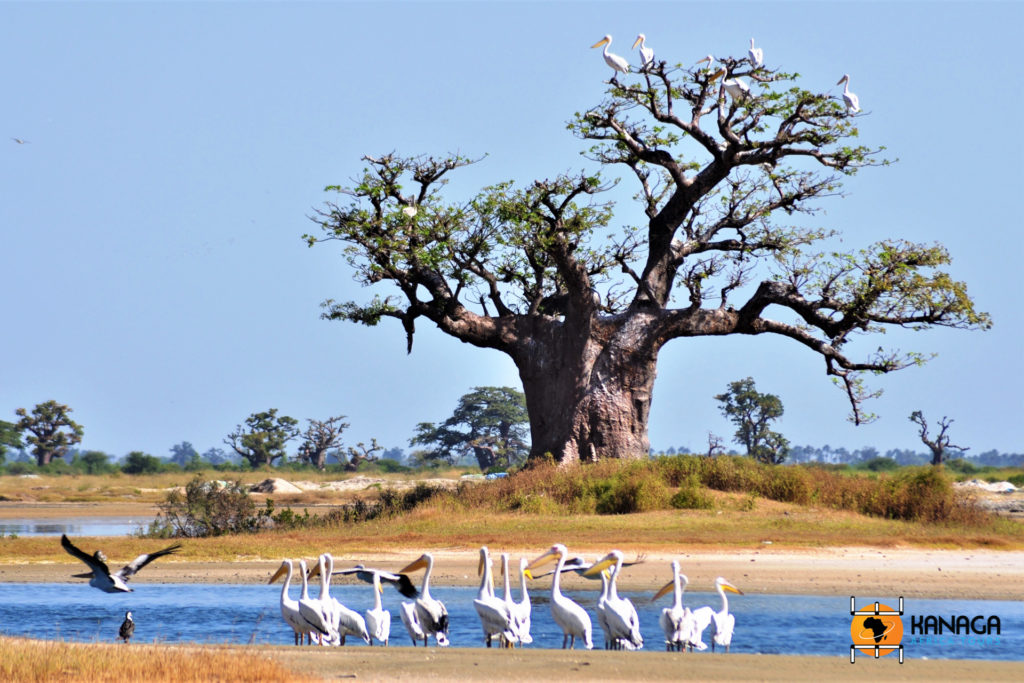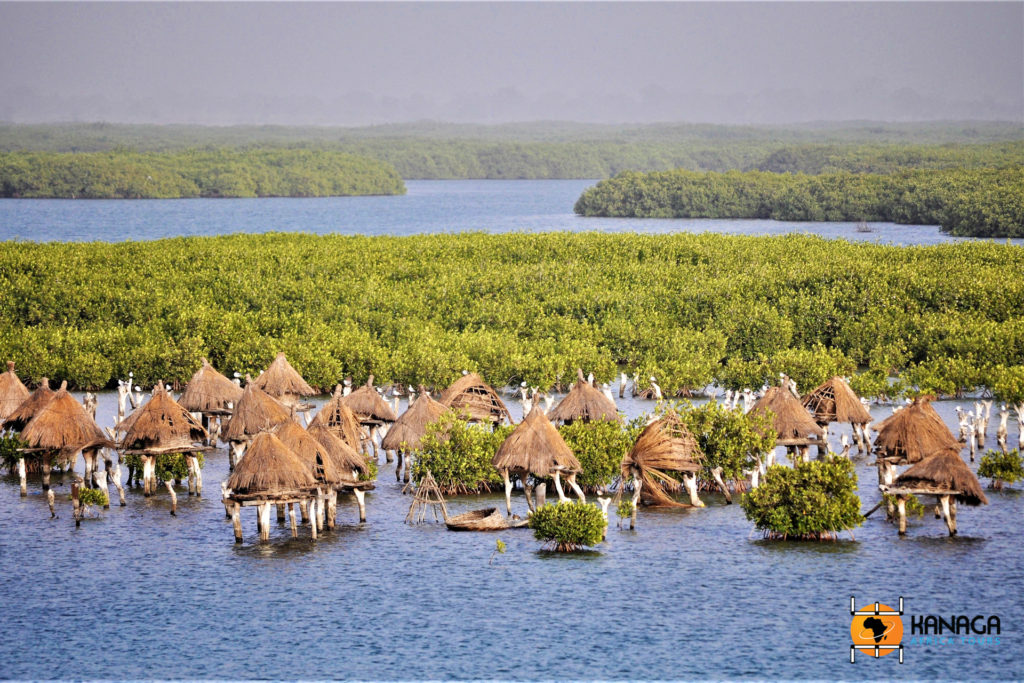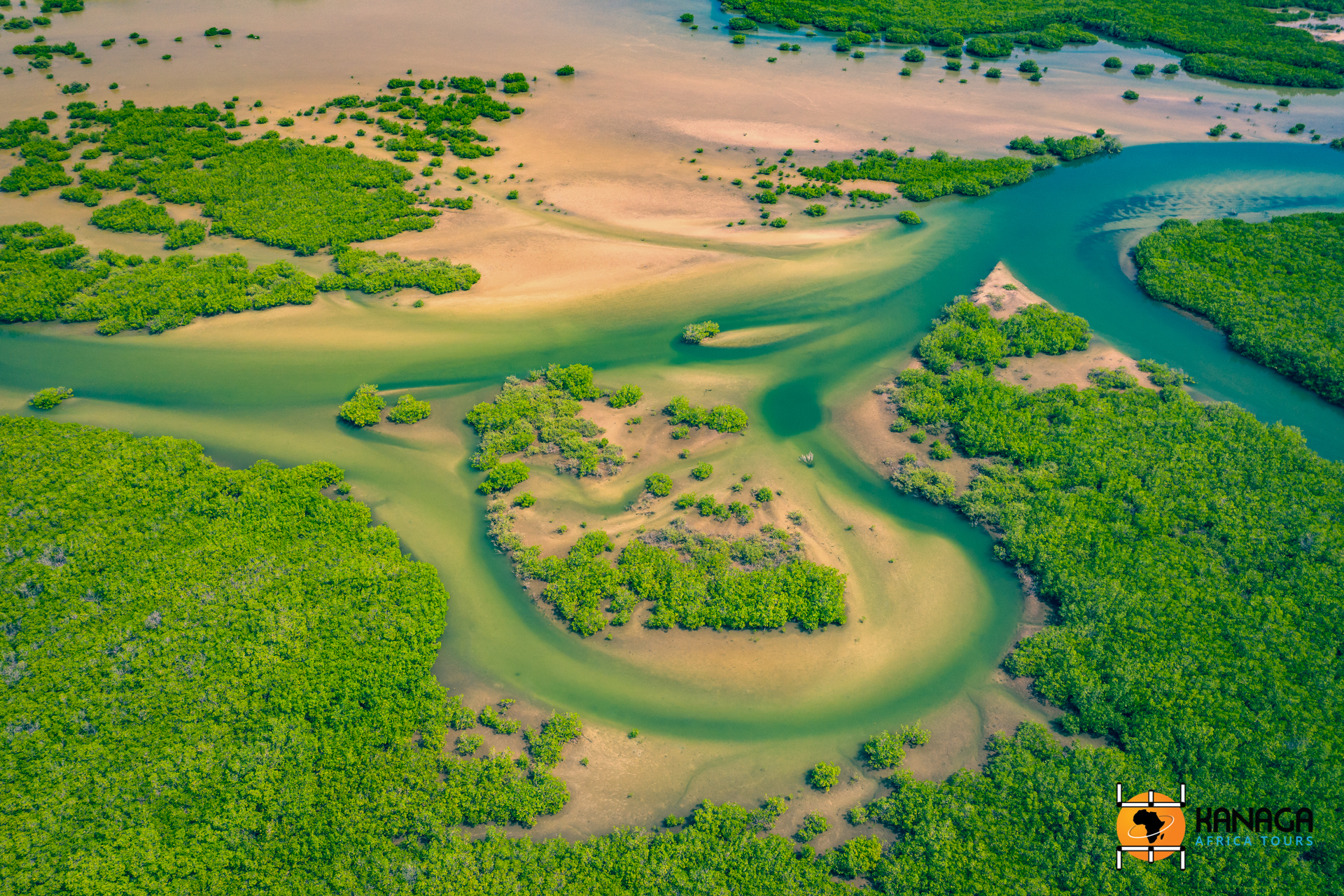Casamance and the Siné-Saloum Delta are certainly among the most fascinating and characteristic regions of Senegal. With their lush vegetation, traditions and culture of the Dioula and Serere peoples, they stand out from the rest of the country, not only culturally, but also geographically.
Siné-Saloum is isolated from the rest of the country by the immense and articulated arm of the sea that stretches for hundreds of kilometres into the heart of the Sahelo-Sudanese savannahs of the interior; Casamance, further south, in turn separated geo-politically from Siné-Saloum, by the small English-speaking enclave state of the Gambia.
In Casamance, this geographical, climatic and cultural divide fuelled the separatist feelings of the Dioula people for years. Since 2004, the political situation has found a lasting resolution and the region has once again become a tourist destination, with the beautiful tree-lined boulevards of the capital Ziguinchor, the paradisiacal beaches of Cap Skirring and the silvery Casamance River.
The decadently beautiful town of Zinguinchor is an extremely charming place with the mango-lined boulevards, the crumbling colonial architecture softened by bougainvillea bushes, the warm light of sunset on the fishermen’s wharf and the kindness of its inhabitants.
Numerous canoe trips on the placid Casamance River start here. The landscape from its banks is of the highest environmental interest, as well as a sanctuary for mangroves and a multitude of bird species.
In Enampore, in a rural area not far from the capital, there are interesting examples of traditional houses with an “impluvium”, or funnel-shaped hole in the roof, which allows rainwater to be supplied into a cistern. Not far away, the quiet town of Oussouye, on the edge of the Lower Casamance forest, is famous for its animist royal court, to which the Diola population still turn for advice and to solve community problems. A walk through the forest will help you understand why Casamance is called the garden of Senegal. This is where most of the cashew nuts, mangoes, shea, yams, rice, millet and sugar cane are harvested to meet the needs of the Senegalese market.
To visit Île de Carabane, you’ll embark on a traditional pirogue at Elinkine, a lively fishing village. The lakeside landscape is enchanting, with mangroves, water birds and small, colourful wooden boats. The island was the first French trading outpost in Casamance. The colonial buildings are practically all in ruins, but the small cemetery along the beach, which preserves the graves of French settlers and sailors, bears witness to the historical period. This is an excursion not to be missed and to conclude, a tasting of freshly gathered oysters, seared on hot coals.
The Cap Skirring beaches are very popular with international tourists and are among the best equipped for hotel accommodation and seaside activities. However, they remain wild and unspoilt stretches of sand, fringed with palm trees, more like an earthly paradise than a tourist beach. In few words it’s the ideal spot to relax.
Heading north from Senegambia, the vast region of the Siné-Saloum Delta begins, where the fossilised river of the same name struggles with the ocean tides, fights against the force of the sea, and defends itself by retreating into an intricate maze of bolongs (channels) and brackish water corridors, inlets and recesses, until it opens up, exhausted, towards the Atlantic. A paradise of mangroves and green wet forests, it has been inhabited since time immemorial by the noble Serere people of farmers and fishermen.
Endless canoe itineraries reveal one of Senegal’s most precious environmental sanctuaries.
Toubacouta, Ndnagane, Bamboung, Fandiougne, Mar Lodj, are just a few of the Serere villages and settlements, surrounded by explosive green vegetation and surrounded by water, to the point that it is difficult to tell whether they are mainland or islands. Here, the unique transition between a tunnel-like water landscape, the dense wet forest of tall trees, and the wooded savannah provides a habitat for colonies of flamingos, pelicans and herons, dolphins and sea turtles, numerous primates, warthogs and hyenas. The beautiful colonial Joal-Fadiouth island, built entirely on a stratification of fossil shells, and with its characteristic Serere thatched granaries on stilts, marks the exit gate from the Delta and the entrance to the Petite-Cote.







